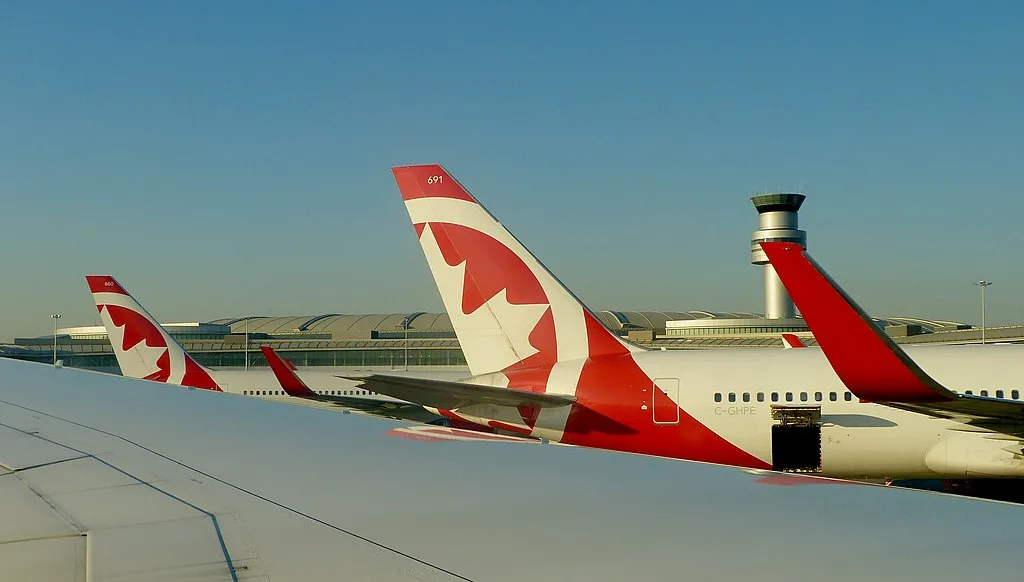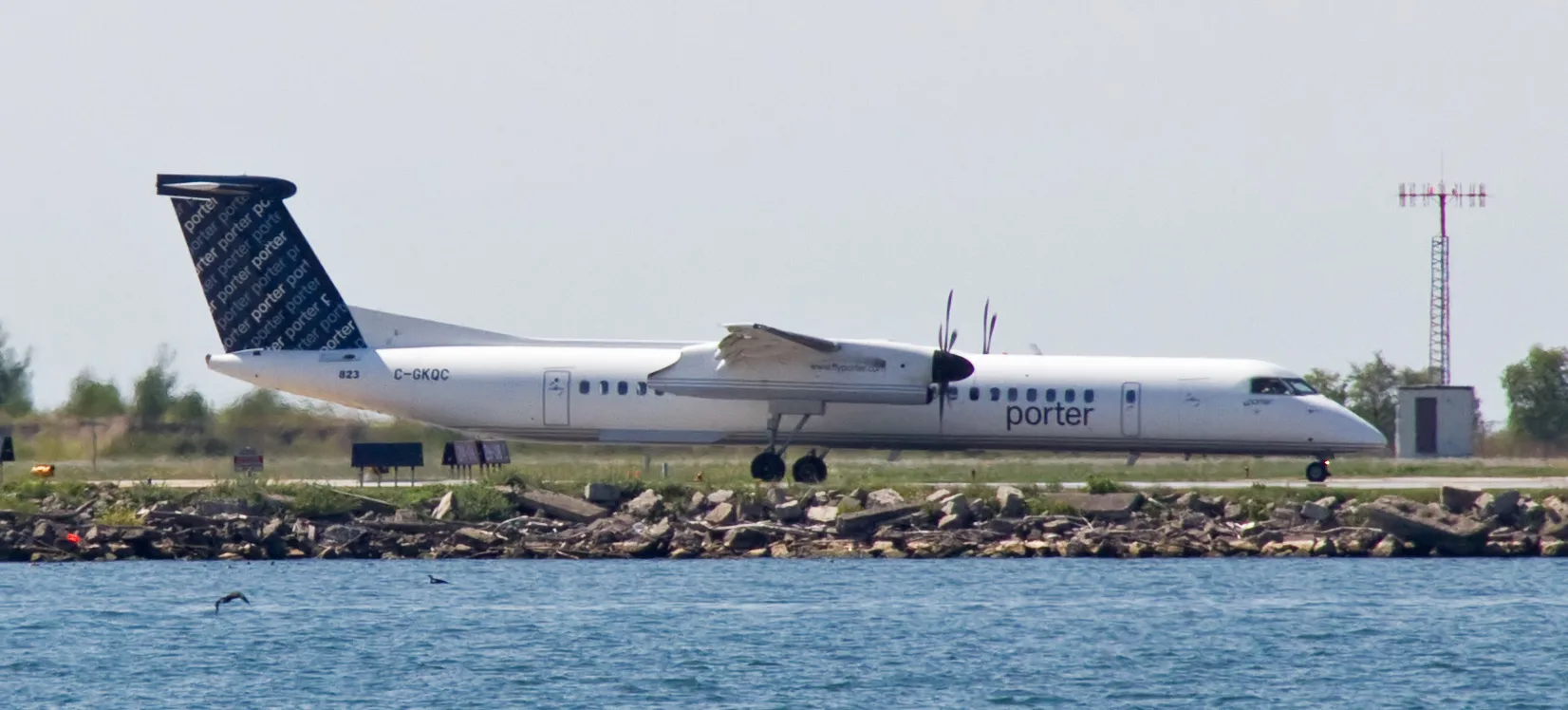Imagine a country so vast that air travel becomes not just a convenience, but a necessity. Welcome to Canada, where airlines and airports form the lifeline of this expansive nation, connecting bustling cities with remote communities and opening gateways to the world. Have you ever wondered how major airlines like Air Canada, WestJet, and Porter Airlines manage to keep millions of passengers and tons of cargo moving smoothly across this enormous landscape? Or how airports like Toronto Pearson, Vancouver International, and Montréal-Trudeau handle the challenges of extreme weather, logistical complexities, and the evolving demands of modern travelers?

Author : GabrielleMerk – wikimedia.org
Dive into the fascinating world of Canada’s aviation sector, where cutting-edge technology meets relentless dedication. Discover the vital role these airlines and airports play in supporting the economy, fostering tourism, and ensuring that Canadians stay connected with each other and the global community. Learn about the obstacles they face and the innovative solutions they employ to overcome them.
The Role of Airlines in Canada
Overview of Major Airlines
Canada has several major airlines that connect the country with the rest of the world. The most notable ones are Air Canada, WestJet, and Porter Airlines. These airlines link big cities, small towns, and international destinations.
Air Canada: The National Leader
Air Canada is the largest airline in Canada. It flies to places all over the world, covering six continents. People choose Air Canada for its excellent service and frequent flyer program. The airline’s fleet has different types of aircraft, suitable for both short and long trips.
Besides flying passengers, Air Canada Cargo helps in transporting goods. This service is crucial for businesses that need to move products quickly and efficiently around the globe. Air Canada’s wide network and high-quality service make it a key player in the Canadian aviation industry.
WestJet: Affordable and Friendly
WestJet is known for its low fares and friendly service, making air travel more affordable for many people. It started in 1996 as a cheaper alternative to Air Canada, initially serving Western Canada. Now, WestJet flies to many destinations in North America, Central America, the Caribbean, and Europe.
WestJet focuses on customer satisfaction, offering a pleasant travel experience. Its loyalty program, WestJet Rewards, gives frequent flyers various benefits. WestJet also has a modern fleet, ensuring safety and comfort for travelers.
WestJet Cargo supports the economy by moving goods quickly and reliably. This service is vital for industries that depend on fast deliveries.
Porter Airlines: Regional Convenience
Porter Airlines operates from Billy Bishop Toronto City Airport. It focuses on regional routes and is known for its convenience and high level of customer service. Since its launch in 2006, Porter has aimed to provide a premium experience at competitive prices.
Porter mainly serves Canadian and U.S. destinations, catering especially to business travelers. It offers unique amenities like free snacks and drinks, including wine and beer. The airport’s close location to downtown Toronto makes it very convenient for passengers.
Although smaller than Air Canada and WestJet, Porter has created a niche for itself by focusing on quality service and strategic routes. This has helped it build a loyal customer base.

Author: Tony Hisgett – wikimedia.org
Economic Impact of Airlines
These airlines are crucial for both passenger travel and cargo transport. They support Canada’s economy by moving goods and services, which helps trade and commerce. Air freight is essential for many industries, such as manufacturing and retail, where quick delivery is necessary.
Airlines also boost tourism by making it easier for people from other countries to visit Canada. Tourists spend money on local businesses like hotels, restaurants, and attractions, which helps the local economy. The aviation sector also provides many jobs, from pilots to ground staff, contributing significantly to the economy.
Overall, Canada’s airlines play a vital role in connecting the country internally and with the rest of the world. They help businesses grow, promote cultural exchange, and support economic development, making them an essential part of the nation’s infrastructure.
Challenges Facing Canada’s Aviation Sector
Despite their importance, Canada’s airlines and airports face several challenges. These challenges affect their operations, efficiency, and ability to serve passengers effectively. Let’s explore some of the main issues they encounter.
Geographical Size and Logistics
Canada is the second-largest country in the world by land area. This vast geographical size presents significant logistical difficulties for airlines. Operating flights across such large distances is expensive. Airlines must invest in fuel, maintenance, and staffing to cover long domestic routes. Smaller and remote communities often rely on air travel as their primary means of connection, making it essential but costly to maintain these routes.
Maintaining infrastructure in remote areas is also challenging. Airports in less populated regions may not have the same level of facilities and services as those in major cities. This can impact the quality of service and the ability to handle high volumes of passengers or cargo efficiently.
Weather Conditions
Canada’s weather conditions, particularly in winter, can cause significant disruptions and delays. Snowstorms, ice, and freezing temperatures are common in many parts of the country. These weather conditions can lead to flight cancellations, delays, and safety concerns. Airports must invest heavily in snow removal equipment, de-icing services, and other winter operations to ensure safety and minimize disruptions.
Poor weather also affects flight schedules and passenger experiences. Delays can lead to missed connections, longer travel times, and increased stress for travelers. Airlines must manage these issues while maintaining safety and customer satisfaction.
Economic Challenges
Economic fluctuations also impact Canada’s aviation sector. Changes in fuel prices, economic downturns, and currency exchange rates can affect airline operations and profitability. High fuel prices increase operating costs, which can lead to higher ticket prices for passengers. Economic downturns reduce the demand for travel as people and businesses cut back on expenses.
Airlines must navigate these economic challenges while trying to remain competitive and offer affordable fares. They often implement cost-cutting measures, seek government support, and explore new revenue streams to stay afloat during tough economic times.
Environmental Concerns
The aviation industry faces growing pressure to reduce its environmental impact. Air travel contributes to greenhouse gas emissions, which contribute to climate change. There is increasing demand from governments, environmental groups, and the public for airlines to adopt more sustainable practices.
Airlines are investing in more fuel-efficient aircraft, exploring alternative fuels, and implementing carbon offset programs to address these concerns. However, these initiatives require significant investment and time to implement effectively. Balancing environmental goals with economic viability remains a challenge for the industry.
Regulatory and Security Challenges
Airlines and airports must comply with numerous regulations and security requirements. These regulations are essential for ensuring safety and security but can also be complex and costly to implement. Compliance with international standards, government policies, and security protocols requires continuous effort and investment.
Security measures, such as passenger screening and baggage checks, are crucial for safety but can cause delays and inconvenience for travelers. Airports and airlines work to streamline these processes to enhance efficiency while maintaining high security standards.
Passenger Experience Enhancements
In recent years, Canada’s airlines and airports have introduced several initiatives to enhance the passenger experience. These improvements are designed to make travel more comfortable, efficient, and enjoyable. Let’s explore some of these enhancements.
- New Terminal Amenities: Airports across Canada are investing in new terminal amenities to provide a better experience for travelers. Modern terminals feature a variety of dining and shopping options, comfortable seating areas, and relaxing lounges. For example, Toronto Pearson International Airport has upgraded its dining options to include a mix of local and international cuisines, ensuring that travelers have a wide range of choices. Vancouver International Airport has incorporated art installations and exhibits that reflect the cultural heritage of British Columbia, creating a more engaging environment for passengers.
In addition, many airports now offer amenities such as free Wi-Fi, charging stations, and children’s play areas to cater to the needs of all passengers. These amenities make waiting for flights more pleasant and convenient.
- Streamlined Check-in Processes: To reduce waiting times and make the check-in process more efficient, airlines and airports have introduced several technological advancements. Self-service kiosks allow passengers to check in, print boarding passes, and tag their luggage without needing assistance from airline staff. Mobile check-in options enable travelers to check in using their smartphones, further speeding up the process.
Airports are also implementing biometric technology, such as facial recognition, to streamline security and boarding procedures. This technology reduces the need for physical document checks and speeds up the overall process, making it easier for passengers to move through the airport.
- Enhanced In-flight Entertainment Options: Airlines are continuously improving in-flight entertainment options to provide a more enjoyable experience for passengers. Many airlines now offer personal screens on the back of each seat, providing access to a wide range of movies, TV shows, music, and games. Passengers can choose from a variety of entertainment options to suit their preferences.
Some airlines also offer in-flight Wi-Fi, allowing passengers to stay connected during their flight. This service is particularly valuable for business travelers who need to work while in the air. Additionally, airlines are upgrading their in-flight entertainment systems to include high-definition screens and noise-canceling headphones, ensuring a better viewing and listening experience.
Conclusion
Canada’s major airlines like Air Canada, WestJet, and Porter Airlines connect cities, towns, and international destinations. Airlines and airports support the economy by moving goods, promoting tourism, and creating jobs. Challenges include vast geographical distances, extreme weather, economic fluctuations, and environmental concerns. Recent enhancements in passenger experience include new terminal amenities, streamlined check-in, and improved in-flight entertainment. Safety measures during pandemics and the adoption of sustainable practices are key focuses for the aviation sector.
FAQs
What are the major airlines in Canada?
The major airlines in Canada are Air Canada, WestJet, and Porter Airlines.
How do Canada’s airlines contribute to the economy?
Canada’s airlines support the economy by moving goods, promoting tourism, and creating jobs.
What are some of the challenges facing Canada’s aviation sector?
Challenges include vast geographical distances, extreme weather conditions, economic fluctuations, and environmental concerns.
What improvements have been made to enhance passenger experience in Canadian airports?
Recent enhancements include new terminal amenities, streamlined check-in processes, and improved in-flight entertainment options.
How have airlines and airports ensured passenger safety during pandemics?
Airlines and airports have implemented enhanced cleaning protocols, mandatory mask-wearing, social distancing measures, and upgraded ventilation systems.
What steps are being taken to make Canada’s aviation sector more sustainable?
Steps include investing in fuel-efficient aircraft, exploring alternative fuels, and implementing carbon offset programs.